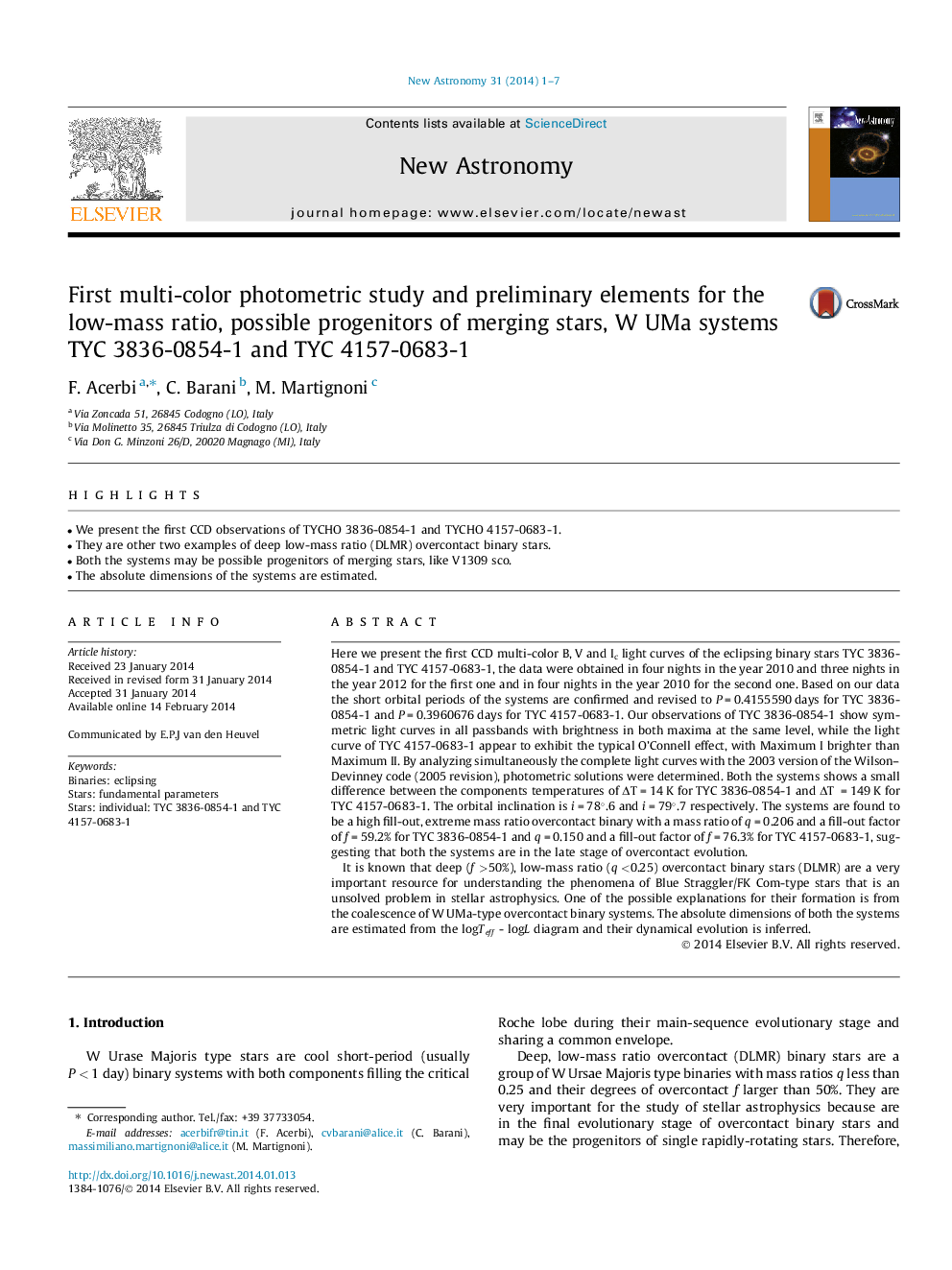| Article ID | Journal | Published Year | Pages | File Type |
|---|---|---|---|---|
| 1778919 | New Astronomy | 2014 | 7 Pages |
•We present the first CCD observations of TYCHO 3836-0854-1 and TYCHO 4157-0683-1.•They are other two examples of deep low-mass ratio (DLMR) overcontact binary stars.•Both the systems may be possible progenitors of merging stars, like V1309 sco.•The absolute dimensions of the systems are estimated.
Here we present the first CCD multi-color B, V and Ic light curves of the eclipsing binary stars TYC 3836-0854-1 and TYC 4157-0683-1, the data were obtained in four nights in the year 2010 and three nights in the year 2012 for the first one and in four nights in the year 2010 for the second one. Based on our data the short orbital periods of the systems are confirmed and revised to P = 0.4155590 days for TYC 3836-0854-1 and P = 0.3960676 days for TYC 4157-0683-1. Our observations of TYC 3836-0854-1 show symmetric light curves in all passbands with brightness in both maxima at the same level, while the light curve of TYC 4157-0683-1 appear to exhibit the typical O’Connell effect, with Maximum I brighter than Maximum II. By analyzing simultaneously the complete light curves with the 2003 version of the Wilson–Devinney code (2005 revision), photometric solutions were determined. Both the systems shows a small difference between the components temperatures of ΔΔT = 14 K for TYC 3836-0854-1 and ΔΔT = 149 K for TYC 4157-0683-1. The orbital inclination is i = 78°°.6 and i = 79°°.7 respectively. The systems are found to be a high fill-out, extreme mass ratio overcontact binary with a mass ratio of q = 0.206 and a fill-out factor of f = 59.2% for TYC 3836-0854-1 and q = 0.150 and a fill-out factor of f = 76.3% for TYC 4157-0683-1, suggesting that both the systems are in the late stage of overcontact evolution.It is known that deep (f>f>50%), low-mass ratio (q
